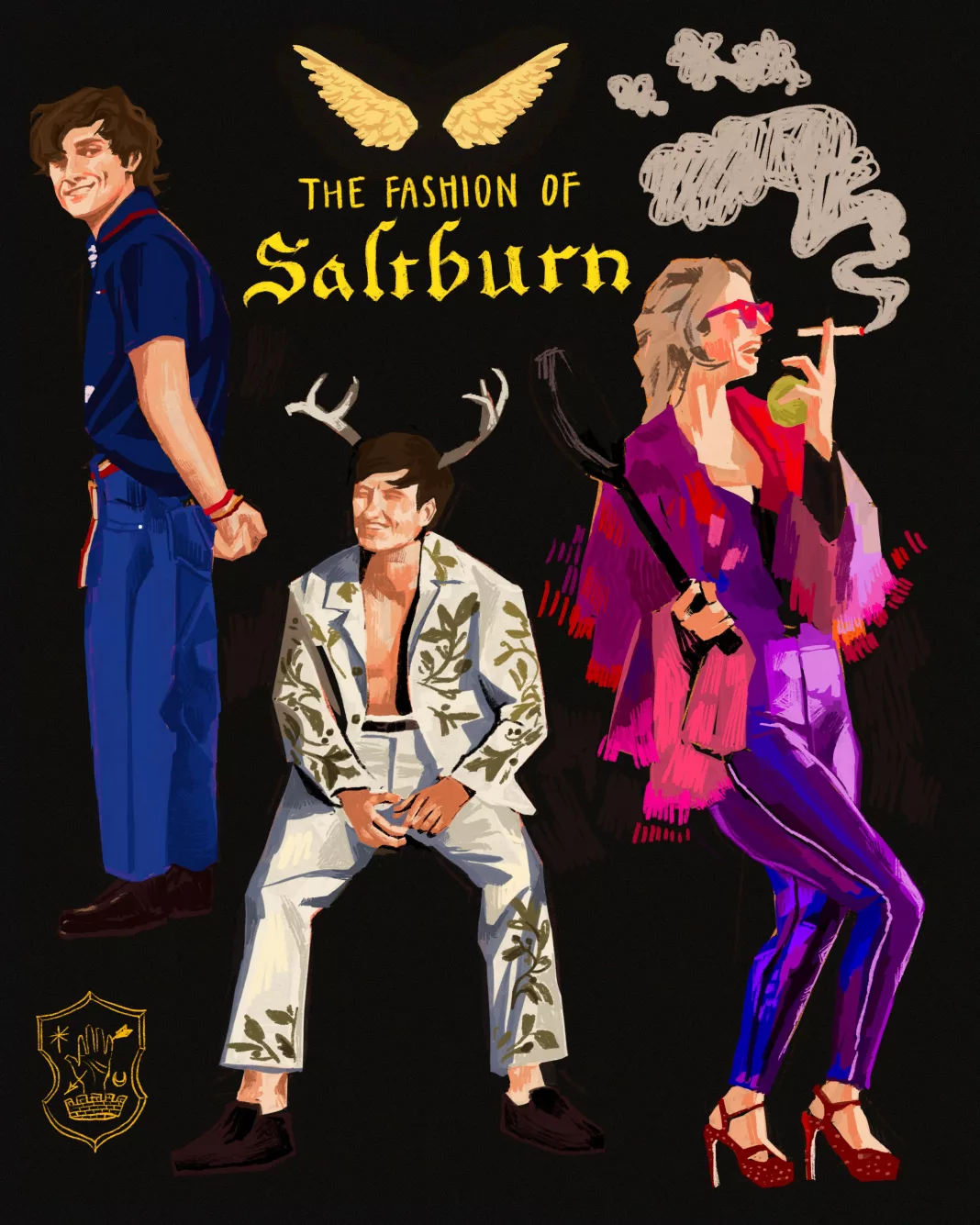Emerald Fennell’s latest film ‘Saltburn’ has rocked audiences for many reasons. It features an all-star cast, classic throwback tunes, and a twisted plot accompanied by striking visuals. For ‘Saltburn’, Fennell collaborated with costume designer Sophie Canale, who claims to have swapped Pinterest for Facebook in her search for outfit inspiration. Having previously worked on Neftlix’s ‘Bridgerton’,Canale has a knack for encapsulating a range of historical periods through wardrobe, and shocking as it may seem, the mid-2000s are now technically ‘vintage’. Nineties-inspired styles have experienced a massive surge in popularity up until now, so it seems necessary to dissect Fennell’s portrayal of noughties trends to see what deserves to return, and what ought to be left in the past.
The opening scene offers a vignette of Oxford in 2006, where the chaos of freshers and their doting parents sets the temporal context as the camera journeys with Oliver around Radcliffe Square. The architecture in the backdrop is timeless, meaning costume is essential to conveying the temporal context of ‘Saltburn’. Canale and Fennell achieve this through clichés – one extra can be seen dressed top-to-toe in bubblegum pink, with brown UGG boots to add variety. As other groups of students stroll around the square there is a stark absence of skinny jeans, with bootcuts, flares, and more relaxed denim styles being favoured. The cyclical movement of fashion trends such as these might explain why ‘Saltburn’s costuming choices are receiving the approval of modern audiences.
As Oliver later stands in Brasenose’s first quad, we see a full Juicy Couture tracksuit worn by another student in the back. Nothing screams ‘noughties’ more than this. We have witnessed a revival of the iconic two-piece, with the brand reappearing in Urban Outfitters, but it wasn’t until 2023 that the original low-rise style made its comeback. That of course does not mean we must accept every noughties trend in 2024 as it first emerged. I was hardly a fan of the party outfits worn by the girls, and I would lament the return of wearing denim miniskirts with black opaque tights.
Canale’s costuming for Felix makes extensive use of the “posh-boy polo”. With a wardrobe dominated by Ralph Lauren, popped collars and lived-in denim, Felix’s style effortlessly reflects English noughties fashion. Canale further appropriates the style of the lead character to his culture through particular outfits like the salmon shirt under a blue jumper, which encapsulates the styles of the British upper-middle class. The simplicity of Felix’s wardrobe is here to stay, with linen shirts and Carhartt jeans still being sported across Oxford. What constrains Felix’s wardrobe to his time are his accessories, from the plethora of bracelets to that questionable eyebrow piercing.
At Saltburn estate we encounter Venetia, whose makeup imitates the smokey-eye look associated with Effy Stonem from ‘Skins’. The series, first released in 2007, perfectly exemplifies the trends of the late noughties in Bristol, and considering the glamourisation of Effy in popular culture, it makes complete sense that Fennell pushes the appeal further through Venetia. We are already witnessing a rise in interest for ‘indie sleaze’, a trend that took off in the United States and United Kingdom contemporary to the plot of both ‘Saltburn’ and ‘Skins’. It would fail to surprise me if the reception of ‘Saltburn’ propels these aesthetics back into the mainstream.
Farley’s costuming is unfairly overlooked, despite it being so distinct from the majority of the students. His style is anachronistic to the noughties; when he first appears on-screen, he stands out for adopting flared trousers and patterned sweater vests that evoke the seventies and eighties. Farley’s vintage flair contrasts the trendiness of his peers, whose trial-and-error of trends juxtaposes his refined interpretation of former fashions. Perhaps this foreshadows how we might re-interpret and employ noughties trends in response to ‘Saltburn’.
So ‘Saltburn’ fuels the fire for a revival of noughties trends, and the costume design of Fennell and Canale draws on iconic fashions from the time that has already made a return. UGGs are loved by many, and Juicy Couture is adored for letting us girls unleash our inner Paris Hilton. The wardrobe of Felix is distinct to its contemporary through the selection of brands from which Canale has sourced, and I would hope that more men of Oxford follow his example. Fennell draws on examples from popular culture current to ‘Saltburn’s’ setting, and in emulation of original media and fashions, she may have just encouraged a renewed interest in noughties fashion. The premiere of the film coincides with the release of the final season of Netflix’s ‘The Crown’, whose portrayal of Prince William and then-Kate Middleton at university might inspire some to look further into the styles of the early noughties. It seems that we might be witnessing the rise of the ‘noughties period drama’ after all.


